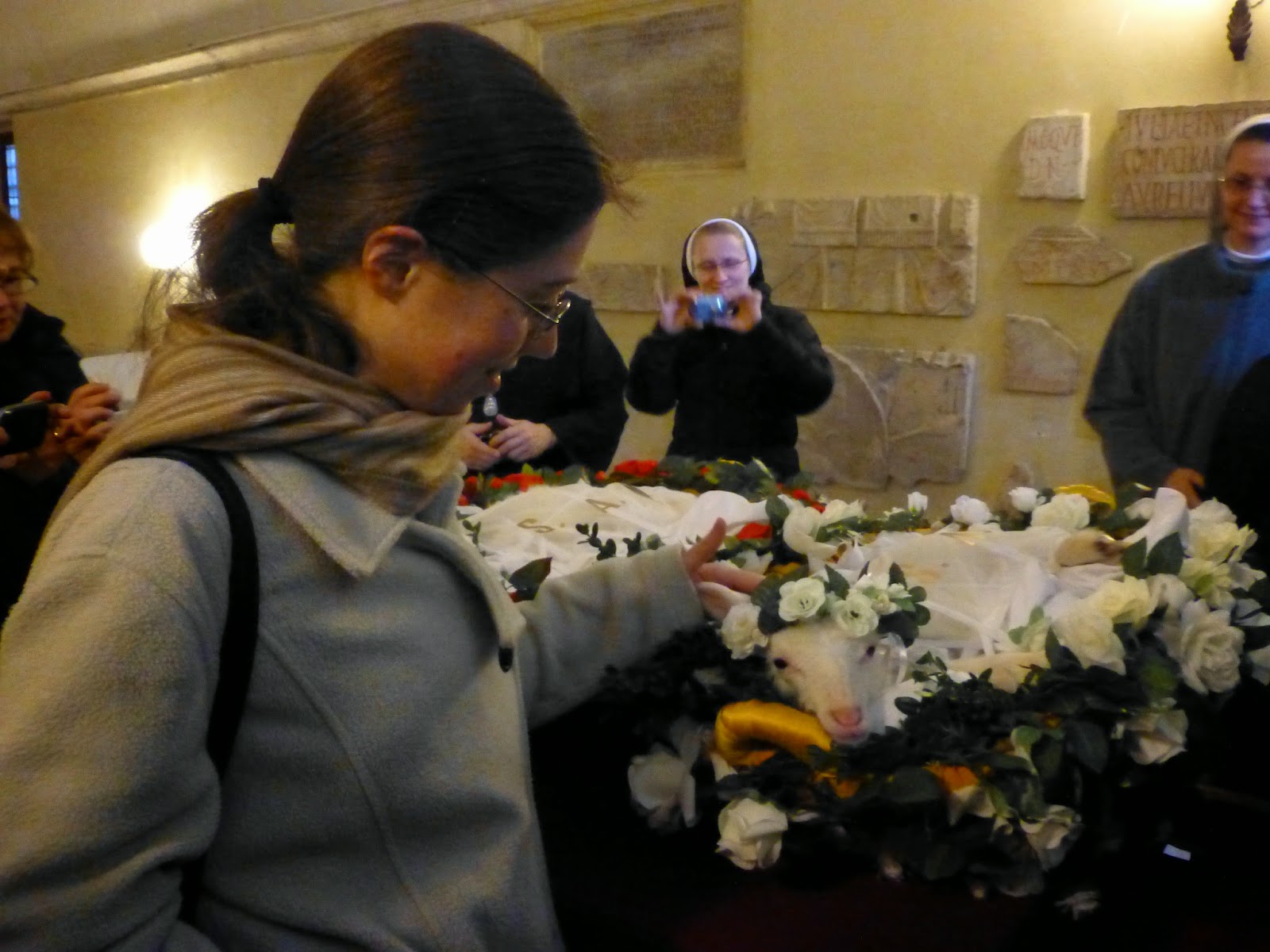A
blessed feast of St. Agnes, virgin and martyr, to all my sisters in Christ
around the world!
As
many of you already know, in Rome there is a special custom for the feast of
St. Agnes. Two lambs are blessed during Mass at the basilica of St. Agnes Outside the Walls
(which was built on the site of St. Anges’ parents’ home). Later, these lambs
will be shorn, and their wool will be used to make the pallia that
new metropolitan archbishops receive from the Holy Father on the feast of Sts.
Peter and Paul.
This tradition is especially meaningful for me in my own spirituality, since it’s beautifully symbolic of consecrated virgins’ call to provide spiritual support for the ministry of bishops through our life of prayer and total dedication to Christ.
This tradition is especially meaningful for me in my own spirituality, since it’s beautifully symbolic of consecrated virgins’ call to provide spiritual support for the ministry of bishops through our life of prayer and total dedication to Christ.
 |
| Here I am in the courtyard of the basilica before Mass. |
 |
| The lambs arrive! |
 |
| Other people petting the lambs, including my friend Fr. Hugh and some local Italian school children on a field trip. |
And finally...
 |
| In front of the poem from Pope St. Damasus. |
In
the basilica, there is a sort of marble plaque with a Latin poem composed in
honor of St. Agnes by Pope St. Damasus (who lived from 304 – 384). This is
actually one of our earliest written sources on the life of St. Agnes. The
plaque was actually lost for several centuries, but was found again in 1728. It
had been used as a paving stone (inscription side down, luckily!), which is why
it had been preserved.
The Latin inscription reads:
FAMA
REFERT SANCTOS DUDUM RETULISSE PARENTES
AGNEN CUM LUGUBRES CANTUS TUBA CONCREPUISSET
NUTRICIS GREMIUM SUBITO LIQUISSE PUELLAM
SPONTE TRUCIS CALCASSE MINAS RABIEMQUE TYRANNI
URERE CUM FLAMMIS VOLUISSET NOBILE CORPUS
VIRIBUS INMENSUM PARVIS SUPERASSE TIMOREM
NUDAQUE PROFUSUM CRINEM PER MEMBRA DEDISSE
NE DOMINI TEMPLUM FACIES PERITURA VIDERET
O VENERANDA MIHI SANCTUM DECUS ALMA PUDORIS
UT DAMASI PRECIBUS FAVEAS PRECOR INCLYTA MARTYR
SPONTE TRUCIS CALCASSE MINAS RABIEMQUE TYRANNI
URERE CUM FLAMMIS VOLUISSET NOBILE CORPUS
VIRIBUS INMENSUM PARVIS SUPERASSE TIMOREM
NUDAQUE PROFUSUM CRINEM PER MEMBRA DEDISSE
NE DOMINI TEMPLUM FACIES PERITURA VIDERET
O VENERANDA MIHI SANCTUM DECUS ALMA PUDORIS
UT DAMASI PRECIBUS FAVEAS PRECOR INCLYTA MARTYR
(Fr.Z’s blog gives an English translation:“It is told that one day
the holy parents recounted that Agnes, when the trumpet had sounded its sad
tunes, suddenly left the lap of her nurse while still a little girl and
willingly trod upon the rage and the threats of the cruel tyrant. Though he
desired to burn the noble body in the flames, with her little forces she
overcame immense fear and, gave her loosened hair to cover her naked limbs,
lest mortal eye might see the temple of the Lord. O one worthy of my veneration,
holy glory of modesty, I pray you, O illustrious martyr, deign to give ear to
the prayers of Damasus.”)

